CHATTANOOGA, Tenn. -- Several members of the Fort McPherson and Fort Gillem community stepped onto a bus Nov. 14 that would take them to the battlefield. It was not to the desert of Iraq or the mountains of Afghanistan where these individuals were headed; rather, it was a battlefield a few hours away in Chattanooga, Tenn.
The U.S. Army Reserve Command (USARC) sponsored a staff ride to the site of a pivotal, yet often forgotten, Civil War battlefield.
While the war was won on the western front, the battle was still lost in time because most people\'s attention was focused on battles in the east, according to Lee Harford, USARC historian. Harford, and fellow historians Ward Zischke, Jason Wetzel and Jim Dale, vice chairman of the Kennesaw Mountain Historical Association, accompanied the tour to help resurrect the battle of Chattanooga.
"It was fascinating to go with historians who can explain the places I've seen in history books," said Lt. Col. Joseph Bilik II, a detailed inspector general, Inspections Divison, USARC. Bilik, who said he enjoys military history and has taken several staff trips to various battlefields during his military career, also brought his son, Joseph Bilik III, 15, along to enjoy the learning experience.
"I think it is interesting to walk the battlefield ... continue the study of what we did, while looking at what we are doing now," the elder Bilik said.
Though the battle of Chattanooga was fought 155 years ago, during the fall of 1863, there are still important lessons to be drawn for them, said Harford.
Though technology and tactics have evolved, the human element of battle still remains, he added.
"One thing that does not change is human beings in combat. The same things were required to lead in the past, the examples of courage, don't change. That is what you can learn: the human element in combat," Harford said.
In addition to learning about principle players in the battle, such as Union Maj. Gens. William Tecumseh Sherman and Joseph Hooker and Confederate generals like Gen. Braxton Bragg and Maj. Gen. Patrick Ronayne Cleburne, the tour also helped illustrate parallels between the Civil War and the current wars in Iraq and Afghanistan.
"It's the same old game with new players and new toys," said Zischke. Like the Iraq war, the Civil War was supposed to be quick, but turned into a drawn out conflict often unsupported by the public, he added.
The war was also similar in the lack of front lines, the use of civilian contract labor to support Soldiers on both sides and the coverage of events by the press. "History repeats itself to a point," Ward said.
ClichAfA, but it is a major reason why the Army has invested so much in the study and preservation of its history through staff rides, Harford said.
Many of the monuments and displays and much of land from past battles is federal land for precisely that reason: as part of the military's education.
"It teaches people about leadership, how Soldiers reacted to combat and how they overcame their fears. It inspires," said Harford, who also has a personal interest in the war. His great, great grandfather, Patrick Harford, served in the war, volunteering with the 1st New Jersey Cavalry, Veteran Volunteer Regiment, after the Battle of Bull Run. Even those unlike Harford and Dale, who also had ancestors fight in the Civil War, can have a personal interest and connection to the war, said Wetzel.
"Army values are timeless; they are the same yesterday, today and tomorrow," Wetzel said. "Studying the lessons of the past allows modern-day Soldiers to understand their heritage."



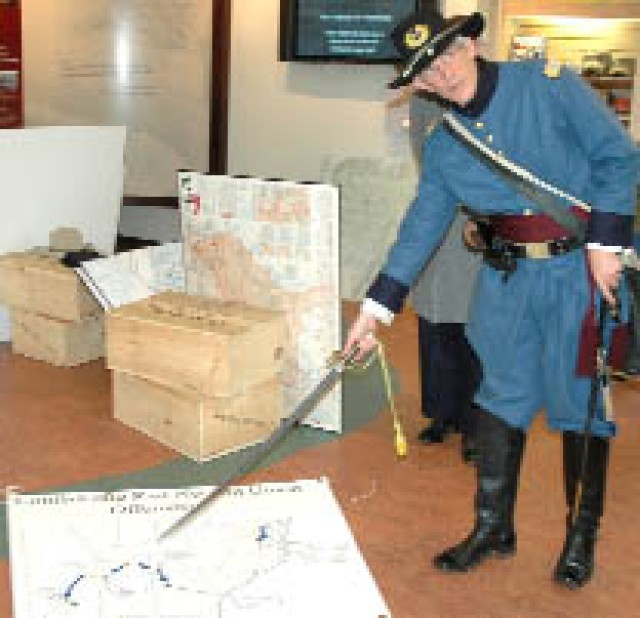
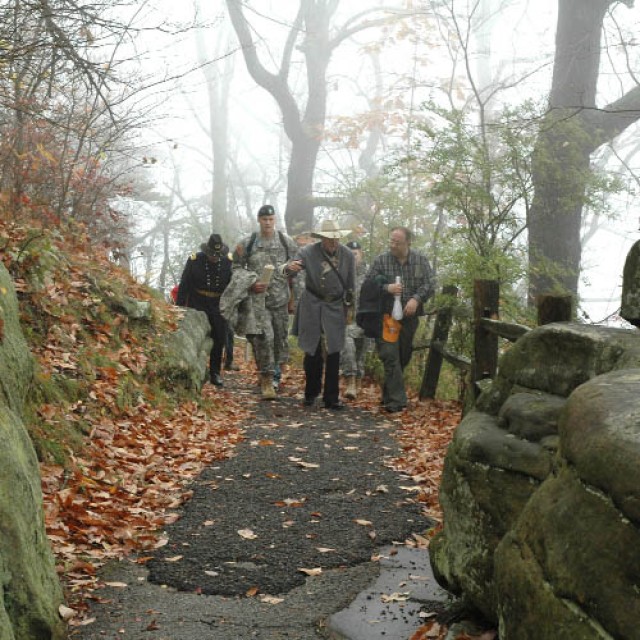

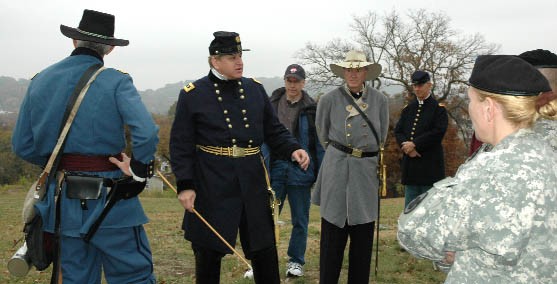

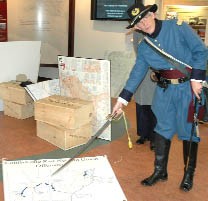
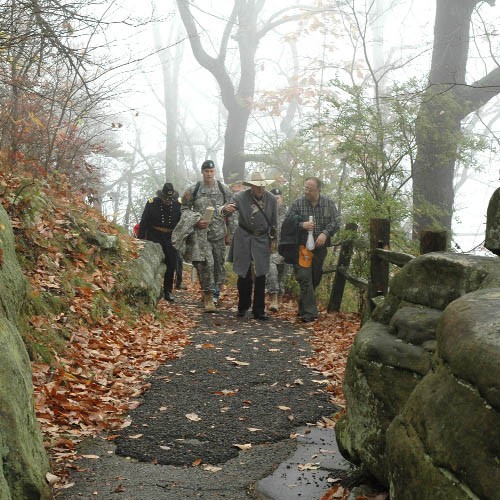
Social Sharing